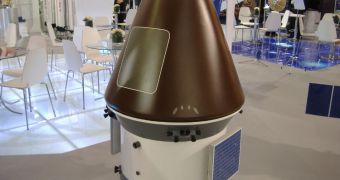Officials at the Russian Federal Space Agency (RosCosmos) announced recently that the new spacecraft the organization is working on will not launch aboard the Rus-M rocket. Instead, experts opted for the Angara A5 heavy-lift delivery system.
According to specifications, Rus-M was supposed to be an upgraded version of the famous Soyuz-FG rocket, which is currently used by both RosCosmos and the European Space Agency (ESA) for a wide array of space missions.
Soyuz-FG is the vehicle of choice for launching the Russian Soyuz manned space capsules to the International Space Station (ISS), in order to ensure crew rotation. At this time, this combo is the only one capable of delivering humans to space safely and reliably.
However, last year, the Rus-M project was canceled. This left the Advanced Crew Vehicle (ACV), the new Russian space capsule currently under development, without any prospective launcher for its 2018 maiden flight.
During an interview for Space, taken at the 2012 Farnborough International Air Show, in Hampshire, England, the director general of RosCosmos, Vladimir Popovkin, revealed that the organization would use a heavy member of the Angara rocket family.
This family consists of four rockets, and is now several years behind schedule. Angara A5 is one of the heaviest delivery systems in this family, and therefore constituted the natural choice for RosCosmos.
The thing is that this rocket was originally developed for unmanned spaceflight, and is primarily designed to carry unmanned cargo spacecraft. However, Russian space engineers are convinced that they can make the necessary modifications ahead of the planned maiden flight.
ACV will be able to carry a maximum of six cosmonauts at a time, in addition to roughly 500 kilograms (1,100 pounds) of cargo. These specs potentially enable it to go all the way to the Moon.
Angara A5 is built around the same Universal Rocket Motor (URM) architecture that all Angara rockets use. The thrusters are fueled by kerosene and liquid oxygen. The A5 will be powered by five URM, RosCosmos officials say.
Initially, Angara A5 will take off from the Plesetsk Cosmodrome, near Arkhangelsk, northern Russia, but will eventually move to the Baiterek facility, which the Russians plan to build at their current base of operations, the Baikonur Cosmodrome, in Kazakhstan.

 14 DAY TRIAL //
14 DAY TRIAL //